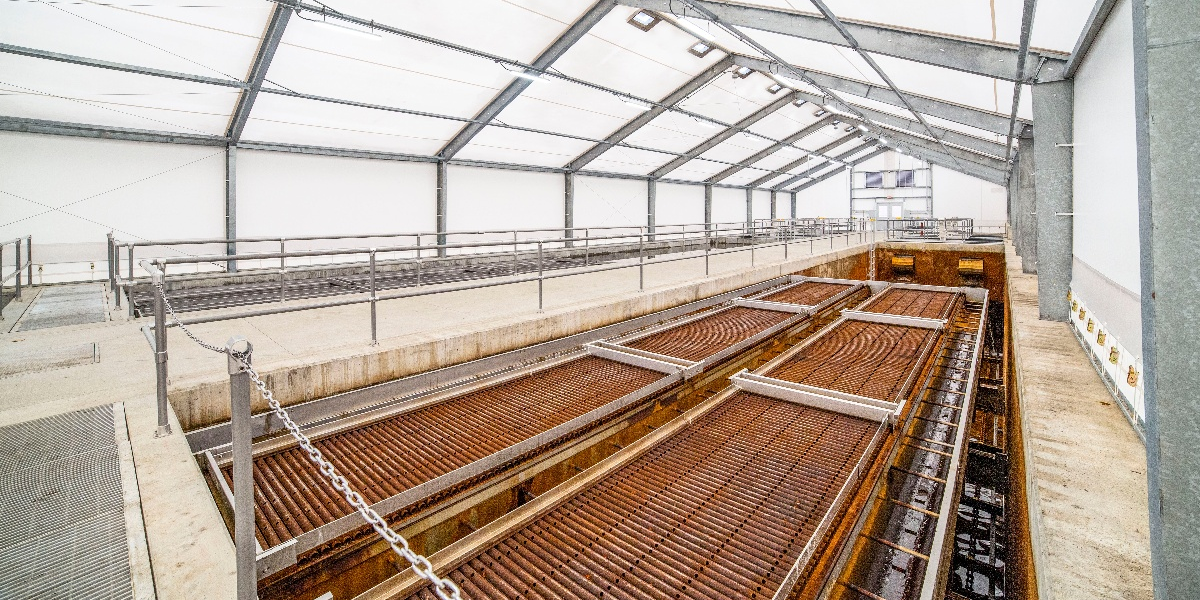Design Factors that Decrease Odor in Waste Processing Facilities

While recycling and waste processing facilities (WPF) are a necessary aspect of modern life – after all, most people don’t want to deal with garbage after it’s brought to the curb — there is one main reason the facility may not be welcomed by the neighborhood: the smell factor. For this reason, as well as the comfort of anyone working in the building, odor control is a crucial aspect of waste and recycling facilities.
Almost every type of refuse – including municipal solid waste (MSW), construction and demolition (C&D) waste, sewer sludge, compost and hazardous waste – produces some type of odor. Generally speaking, odor emissions are caused when bacteria feed on the waste, breaking it down and releasing various odorous gasses. While there’s no way to completely stop the breakdown of waste, with good design it’s possible to reduce or eliminate the amount of odor released into the surrounding area.
Top-to-Bottom Fabric Structure Design
To start with, a fully enclosed fabric structure will naturally contain more odor than one with open walls. While some types of waste management, such as composting, require more fresh air and are best suited for less-enclosed waste buildings, these structures will naturally have more smell.
Good design for odor control is top-to-bottom. A tipping floor designed to gently slope toward a drainage system will be easier to clean and deodorize. Because each fabric structure is custom engineered, it’s possible to add a slight grade to the floor for easy drainage.
Custom Doors
Door placement is also critical for odor control. Doors placed on opposite endwalls are convenient for trucks to drive in and out, however, they also create a wind tunnel effect, allowing the wind to blow odors out of the building and into the surrounding area. Perpendicular doors, for example one on the sidewall and one on the endwall, keep wind and odor inside the structure. Fabric structures on a solid steel frame have the design flexibility to place doors anywhere on the structure, keeping odors away from the wind and inside the structure.
The type of door also impacts the building’s odor control capability. High-speed doors and rapid roll doors that close quickly keep more air and odor contained. When the waste processing facility is equipped with an odor-neutralizing system, a high-speed door will keep more of the conditioned air inside the structure.
Odor Control Systems
The solid steel frame on a fabric structure is also sturdy enough to support odor-control systems including air exchangers, forced air circulation, carbon filters and hoods. Industrial odor neutralizers and systems to spray odor-neutralizing chemicals such as ozone can also be engineered to the building frame.
Negative pressure systems are an effective way to control odor emissions, and may also be required for regulatory compliance, especially when dealing with volatile organic compounds (VOC). With an engineered steel frame, passive intake systems and exhaust vents will be designed to create the necessary amount of negative pressure inside the waste processing facility. Depending on the system, any number of air changes per hour are possible.
While waste processing facilities may bring benefits to the community – such as jobs and energy from waste-to-energy or refuse-derived fuel plants – controlling odor emissions is an important part of being a good neighbor. Fortunately, by remembering a few key factors the entire fabric structure may be designed for odor control.
Subscribe to our Blog
Recent Posts
- 5 Factors Every Project Owner Should Consider Before Approving Building Materials
- The 20-Year View: How Material Choices Impact Long-Term Operational Costs
- Climate Resilience in Commercial Construction: Why Traditional Methods May Not Be Enough
- Speed and Quality: The Role of Hybrid Building Materials
- Beyond the Bleachers: Designing Visually Striking Sports Facilities
